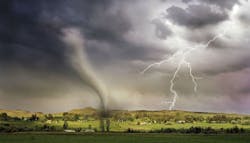July 2019 Fast Stats
Hurricanes, storms, floods, fires, and extreme temperatures have touched every region of the country along with widespread outbreaks of hepatitis A, measles cases, opioid overdose deaths, and community violence at schools, churches, and other public spaces. Results from the 2019 National Health Security Preparedness Index indicate that readiness for these and other emergencies continued to improve in 2018, but current levels of health security remain far from optimal and large disparities in readiness exist between regions across the nation.
6.7
is the current national index level reached (out of a possible 10) for disaster preparedness.
4
states experienced a decline in health security in 2018; 32 states and the District of Columbia improved; and 14 remained unchanged.
6
additional years will be required in an average state to reach the health security levels currently found in the best-prepared states if current trends continue; and at least 10 more years to reach a strong health security level of at least 9.
11
of the states that are significantly above-average cluster in the Northeast, Mid-Atlantic, Upper Midwest, and Central Rocky Mountain regions; clusters of below-average states exist in the South-Central, Upper Mountain West, Pacific Coast, and Midwest regions.
4.9
is the nation’s average score in the Healthcare Delivery domain, which scored lowest compared to the other 6 domains (Health Security Surveillance, Community Planning and Engagement, Information and Incident Management, Countermeasure Management, Environmental and Occupational Health).
$91 billion
was the price of the economic damage caused by disasters and emergency events in 2018; seven high-consequence natural disasters occurred that exceeded $1 billion each.
